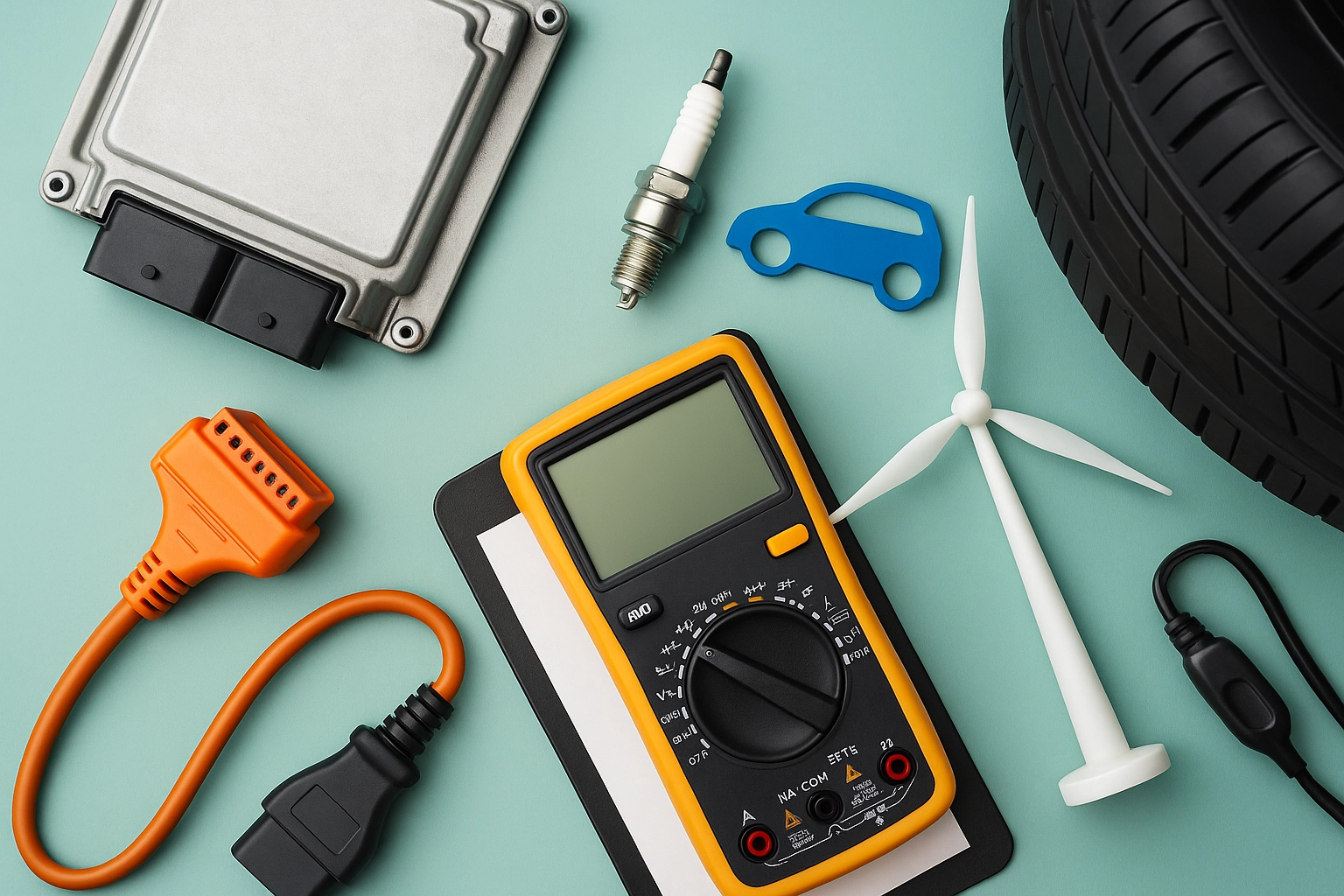SAE J2710 Hybrid Vehicle Battery Performance Testing
The SAE J2710 standard provides a comprehensive framework for testing hybrid vehicle battery performance. This service ensures that batteries meet stringent safety and operational criteria, which is critical for the reliability and longevity of electric and hybrid vehicles.
Hybrid vehicles combine internal combustion engines with electric motors to optimize fuel efficiency and reduce emissions. The battery plays an integral role in this system by storing energy and delivering it when needed. Proper testing ensures that batteries perform efficiently under various operating conditions, from start-up to high-power demands during acceleration.
The SAE J2710 standard is widely recognized for its rigorous protocols, which include a series of tests designed to simulate real-world driving scenarios. These tests are crucial for assessing the battery's ability to maintain performance over time and under varying environmental conditions. The testing process involves multiple stages, each targeting different aspects of the battery's behavior.
One key aspect is the discharge rate test, which evaluates how quickly a battery can deliver power during high-demand situations such as acceleration or climbing steep hills. Another important test is the charge retention test, which measures the battery's ability to hold its charge over extended periods without significant degradation. Additionally, there are tests for temperature cycling and vibration resistance, ensuring that batteries perform reliably in challenging environments.
Accurate and consistent testing is essential for meeting stringent safety requirements set by regulatory bodies like the National Highway Traffic Safety Administration (NHTSA) and the Environmental Protection Agency (EPA). The results of these tests provide critical data for manufacturers to make informed decisions about battery design and performance improvements. This data also helps ensure that vehicles meet environmental standards, contributing to a greener future.
| Test Type | Description | Key Parameters |
|---|---|---|
| Discharge Rate Test | Evaluates battery performance under high-power demands. | Cycle time, power output, temperature stability |
| Charge Retention Test | Assesses the battery's ability to retain charge over extended periods. | Retention percentage after specified time intervals |
| Temperature Cycling | Tests the battery’s performance under fluctuating temperatures. | Temperature ranges, duration of cycles |
| Vibration Resistance Test | Evaluates how well the battery withstands mechanical stress. | Vibration frequency, amplitude, and duration |
The SAE J2710 standard also includes guidelines for specimen preparation, which is crucial to ensure accurate testing results. Proper handling and conditioning of batteries before testing can significantly impact the outcomes. This includes ensuring that batteries are fully charged or discharged as required by the test protocols.
For quality managers and compliance officers, this service ensures regulatory compliance and enhances product safety. R&D engineers benefit from detailed insights into battery performance under various conditions, facilitating innovation and improvement in hybrid vehicle technology. Procurement professionals can rely on this testing to select reliable suppliers and ensure consistent quality across different batches of batteries.
Industry Applications
- Ensuring compliance with SAE J2710 standards for electric and hybrid vehicles.
- Evaluating battery performance under real-world driving conditions.
- Identifying potential issues early in the development process to prevent costly recalls.
| Battery Type | Test Criteria | Expected Outcomes |
|---|---|---|
| Lithium-Ion Batteries | Cycle life, charge retention, discharge rate | Optimal battery performance and longevity |
| Nickel-Metal Hydride Batteries | Temperature stability, vibration resistance | Enhanced reliability in diverse environmental conditions |
| Packaged Battery Systems | Safety testing per ISO 6358 | Compliance with international safety standards |
The SAE J2710 standard is particularly valuable for manufacturers of electric and hybrid vehicles, as it ensures that batteries meet the rigorous performance requirements necessary for these advanced technologies. The tests provide essential data for improving battery design and ensuring that vehicles perform reliably in various operating conditions.
Customer Impact and Satisfaction
- Enhanced safety: Compliance with SAE J2710 ensures that batteries meet stringent safety requirements, reducing the risk of accidents due to underperforming or failing batteries.
- Increased reliability: Real-world testing simulates actual usage conditions, leading to more reliable and durable vehicles.
- Better fuel efficiency: Testing helps identify inefficiencies in battery performance, allowing for optimizations that improve overall vehicle efficiency.
Customer satisfaction is a key focus of this service. By providing accurate and consistent test results, we ensure that manufacturers can deliver products that meet the highest standards of quality and reliability. This not only enhances customer trust but also supports the broader goal of promoting sustainable transportation solutions.
The real-world impact of SAE J2710-compliant testing extends beyond individual vehicles to influence entire industries. By setting a benchmark for battery performance, this standard contributes to the development of more efficient and environmentally friendly hybrid vehicles.
International Acceptance and Recognition
The SAE J2710 standard has gained widespread acceptance in both the automotive industry and regulatory bodies around the world. It is recognized for its comprehensive approach to evaluating battery performance, which helps ensure that electric and hybrid vehicles meet the highest safety and operational standards.
Regulatory authorities such as NHTSA and EPA often reference SAE J2710 when setting guidelines for vehicle testing. This standard is also frequently cited in international agreements on environmental protection and sustainable transportation. The ISO, ASTM, EN, IEC, and other global standards bodies have endorsed the protocols outlined in SAE J2710, further solidifying its place as a leading benchmark.
Manufacturers from various countries rely on this standard to ensure that their products meet international quality and safety requirements. By adhering to SAE J2710, companies can confidently enter new markets with products that are not only reliable but also compliant with global standards. This enhances brand reputation and fosters trust among consumers.





